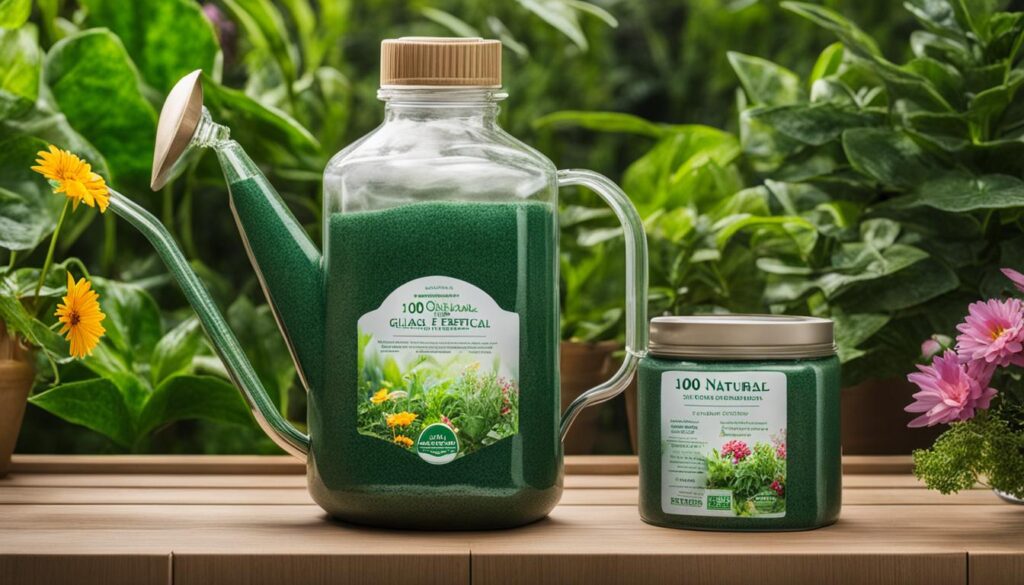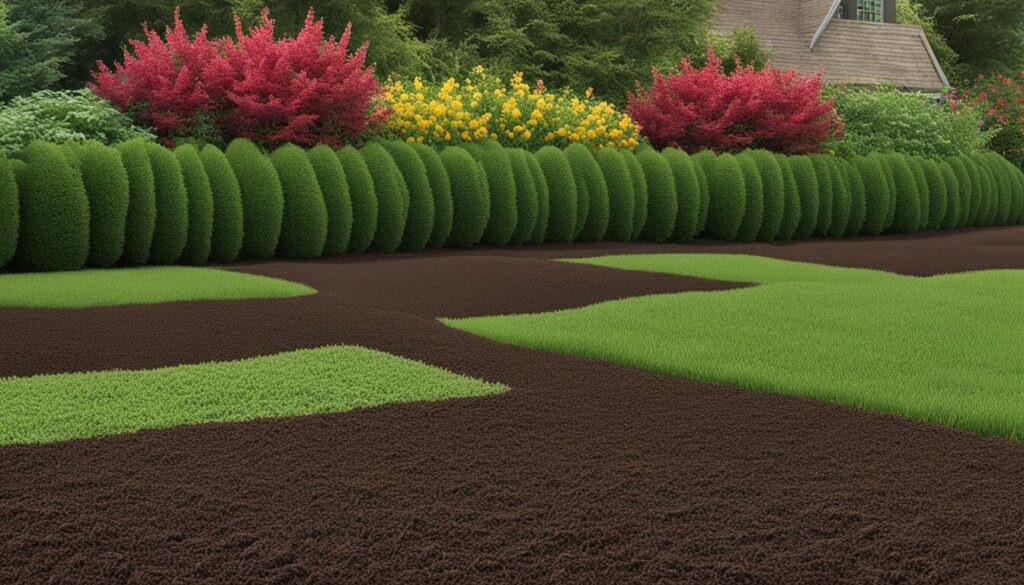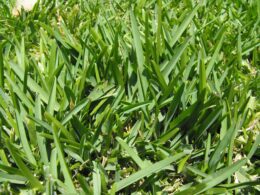Welcome to our comprehensive guide on how to make liquid fertilizer from dry fertilizer. If you’re looking to convert your dry fertilizer into a liquid form, this article is for you. Homemade liquid fertilizer is a cost-effective and efficient way to provide your plants with the nutrients they need for healthy growth. By following a simple process, you can turn your dry fertilizer into a fast-acting liquid that will benefit both new plants and those with nutrient deficiencies.
Post Summary
- Making liquid fertilizer from dry fertilizer is a cost-effective and efficient method.
- Homemade liquid fertilizer is fast-acting and beneficial for new plants and those with nutrient deficiencies.
- The soak and strain method is a simple way to convert dry fertilizer into liquid form.
- Other recipes for liquid fertilizer include liquid kelp fertilizer made from kelp meal or fresh sea kelp.
- Liquid fertilizer has several benefits over granular fertilizers, including immediate nutrient availability and even distribution.
Benefits of Liquid Fertilizer
Liquid fertilizer offers several advantages over its dry or granular counterparts. Its fast-acting nature makes it ideal for providing immediate nutrients to plants, especially new ones, seedlings, or those with nutrient deficiencies. When soil microbial activity slows down during cold weather, liquid fertilizer remains effective in delivering essential nutrients to support plant growth.
Another benefit of liquid fertilizer is its effectiveness in deterring dogs from the garden. Unlike dry granules, which may attract dogs due to their scent, the liquid form is less appealing to them. This makes liquid fertilizer a dog-friendly option for maintaining a healthy garden without the risk of damage caused by pet activity.
Overall, liquid fertilizer provides a convenient and efficient way to deliver nutrients to plants in need. Its fast-acting properties, cold weather effectiveness, and dog-friendly nature make it a popular choice among gardeners looking to maximize plant growth and minimize potential drawbacks.
How to Make Liquid Fertilizer from Dry Organic Fertilizer
Making liquid fertilizer from dry organic fertilizer is a simple and cost-effective way to provide essential nutrients to your plants. This homemade liquid fertilizer can be easily created using the soak and strain method. Here’s how you can do it:
- Start by measuring out 1 cup of dry organic fertilizer. You can use a variety of organic fertilizers such as compost, blood meal, bone meal, or fish meal, depending on your plant’s nutrient requirements.
- Next, take 1 gallon of water and pour it into a large container. Add the measured dry fertilizer to the water and stir well to ensure it is fully submerged.
- Allow the mixture to soak for 24 hours, stirring periodically to facilitate the release of nutrients into the water.
- After 24 hours, strain the liquid using a fine-mesh sieve or cheesecloth to remove any solid particles. The strained liquid is now ready to be used as a liquid fertilizer.
You can apply the liquid fertilizer to your plants by diluting it with water according to the recommended rates for different types of plants. Avoid using undiluted liquid fertilizer as it can potentially burn your plants. It is always best to follow the manufacturer’s instructions or consult a gardening expert for specific guidance on application rates.
Additionally, don’t discard the solids obtained from straining the liquid. These solids contain residual nutrients and can be used as a low-powered fertilizer for established landscape plantings. Simply sprinkle the solids around the base of your plants and gently work them into the soil.
Benefits of Making Your Own Liquid Fertilizer
There are several advantages to making liquid fertilizer from dry organic fertilizer:
- Cost-effective: By making your own liquid fertilizer, you can save money compared to buying commercially available options.
- Customizable nutrient composition: You have control over the type and amount of nutrients present in your homemade liquid fertilizer, allowing you to tailor it to the specific needs of your plants.
- Fast-acting: Liquid fertilizer is quickly absorbed by plant roots, providing fast-acting nutrition and promoting healthy growth.
- Increased nutrient availability: The soaking process helps to extract a higher concentration of nutrients from the dry fertilizer, making them more readily available to plants.
By following the simple steps outlined above, you can easily create your own liquid fertilizer from dry organic fertilizer, providing your plants with the essential nutrients they need for optimal growth and vibrancy.
Other Recipes for Liquid Fertilizer
Aside from the soak and strain method, there are other recipes for homemade liquid fertilizer that you can try. One popular option is liquid kelp fertilizer, which can be made from kelp meal or fresh sea kelp. Liquid kelp fertilizer, also known as seaweed fertilizer, is rich in essential nutrients and growth hormones that can promote healthy plant growth.
To make liquid kelp fertilizer from kelp meal, simply soak the kelp meal in water for a few hours or overnight. The resulting liquid can then be used as a foliar feed or watering solution for your plants. This method provides a concentrated form of nutrients that can be easily absorbed by the plants.
If you have access to fresh sea kelp, you can also make your own liquid kelp fertilizer by soaking chopped sea kelp in water for three days. After three days, strain the liquid and dilute it with water before using it on your plants. This method allows you to harness the natural benefits of sea kelp, providing your plants with a rich source of nutrients.
Benefits of Liquid Kelp Fertilizer
Liquid kelp fertilizer offers several benefits for your plants. It contains a wide range of essential nutrients, including nitrogen, phosphorus, potassium, and trace minerals. These nutrients are readily available in a form that is easily absorbed by the plants, promoting healthy growth and development.
In addition to nutrients, liquid kelp fertilizer also contains natural growth hormones like auxins, cytokinins, and gibberellins. These hormones play a crucial role in regulating plant growth, stimulating root development, and increasing flowering and fruiting. By using liquid kelp fertilizer, you can enhance the overall health and productivity of your plants.
Furthermore, liquid kelp fertilizer can improve the plants’ ability to resist stress and disease. The nutrients and growth hormones in liquid kelp help strengthen the plants’ immune system and increase their resilience to adverse conditions. This can result in healthier and more robust plants that are better equipped to withstand environmental challenges.
| Type of Liquid Fertilizer | Ingredients |
|---|---|
| Liquid Kelp Fertilizer from Kelp Meal | Kelp meal, water |
| Liquid Kelp Fertilizer from Fresh Sea Kelp | Fresh sea kelp, water |
Try experimenting with these homemade liquid fertilizers to see which works best for your plants. Remember to follow the recommended application rates and adjust accordingly based on the specific needs of your plants. With these natural and affordable liquid fertilizer options, you can give your plants the nutrients they need to thrive.
Liquid Fertilizer Vs. Granular Fertilizer
When it comes to fertilizing your plants, you have two main options to choose from: liquid fertilizer and granular fertilizer. Both types have their advantages and disadvantages, and understanding these differences can help you decide which one is best for your gardening needs.
Liquid fertilizer benefits:
- Fast-acting: Liquid fertilizers are quickly absorbed by plants, providing them with nutrients almost immediately.
- Even distribution: Liquid fertilizers can be easily mixed with water and evenly distributed to ensure that every plant receives the same amount of nutrients.
- Easy application: Liquid fertilizers can be applied directly to the soil or sprayed onto the leaves of plants, making them convenient to use.
Granular fertilizer benefits:
- Cost-effective: Granular fertilizers are often more affordable than liquid fertilizers, especially when covering large areas.
- Long-lasting: Granular fertilizers release nutrients slowly over time, providing a continuous source of nourishment for your plants.
- Reduced risk of over-application: Granular fertilizers are less likely to be over-applied, reducing the risk of nutrient burn or damage to your plants.
It’s important to consider your specific gardening preferences and the needs of your plants when choosing between liquid and granular fertilizers. If you’re looking for fast-acting results and easy application, liquid fertilizer may be the best choice. On the other hand, if you’re working on a budget and prefer long-lasting nutrient release, granular fertilizer might be the better option.
Liquid Fertilizer Vs. Granular Fertilizer Comparison
| Aspect | Liquid Fertilizer | Granular Fertilizer |
|---|---|---|
| Speed of nutrient absorption | Fast | Slow |
| Even distribution | Yes | No |
| Application method | Direct soil application or foliar spray | Direct soil application |
| Cost | Higher | Lower |
| Longevity | Short-term | Long-term |
| Over-application risk | Higher | Lower |
Ultimately, the choice between liquid and granular fertilizer depends on what you want to achieve in your garden. Consider factors such as convenience, cost, and longevity to make the best decision for your plants and your gardening goals.
Conclusion
In conclusion, making liquid fertilizer from dry fertilizer is a simple and effective method to provide essential nutrients to your plants. The benefits of liquid fertilizer are numerous. It is fast-acting, ensuring immediate availability of nutrients to support plant growth. Liquid fertilizer is particularly beneficial for new plants, seedlings, and plants with nutrient deficiencies, providing them with the necessary boost for healthy development.
While granular fertilizers have their own advantages, liquid fertilizers have the upper hand in terms of nutrient availability and even distribution. The liquid form allows for easy absorption by plants and ensures that nutrients are evenly distributed throughout the soil. This results in more efficient nutrient uptake and enhanced plant growth.
When deciding between liquid and granular fertilizers, it’s important to consider the specific needs of your plants and your gardening goals. Liquid fertilizers are ideal for those looking for immediate results and need nutrients to be readily available. On the other hand, granular fertilizers are more cost-efficient and longer-lasting in the soil, making them suitable for long-term plant nutrition.
To maximize the benefits of liquid fertilizer, it is recommended to follow the guidelines for application rates specific to different plants. This will ensure that your plants receive the optimal amount of nutrients without any risk of overfertilization. Remember, a balanced approach to fertilization will result in healthier, more vibrant plants.
FAQ
Is liquid fertilizer faster acting than dry or granular fertilizers?
Yes, liquid fertilizer is faster acting than dry or granular fertilizers.
What plants benefit from liquid fertilizer?
Liquid fertilizer is beneficial for new plants, seedlings, and plants with nutrient deficiencies.
When is liquid fertilizer more effective?
Liquid fertilizer is more effective in cold weather when microbial activity in the soil is slowed.
How can I make liquid fertilizer from dry organic fertilizer?
To make liquid fertilizer from dry organic fertilizer, soak 1 cup of fertilizer in 1 gallon of water for 24 hours, strain, and use the liquid at the recommended rates for different plants.
Are there other recipes for homemade liquid fertilizer?
Yes, you can make liquid kelp fertilizer by soaking kelp meal or fresh sea kelp in water and using the resulting liquid as a foliar feed or watering solution.
What are the benefits of liquid fertilizer compared to granular fertilizer?
Liquid fertilizer is fast-acting, provides immediate nutrient availability, ensures an even distribution of plant nutrients, and is easy to handle and apply.
Can Liquid Fertilizer Help Flush Out Potting Soil From Drains?
Accidentally pouring potting soil down the drain can cause a clog. Using liquid fertilizer may help flush out the soil from drains. The fertilizer can break down the soil, making it easier to clear the blockage. It’s important to use the fertilizer according to the manufacturer’s instructions to avoid further damage to the drain.











